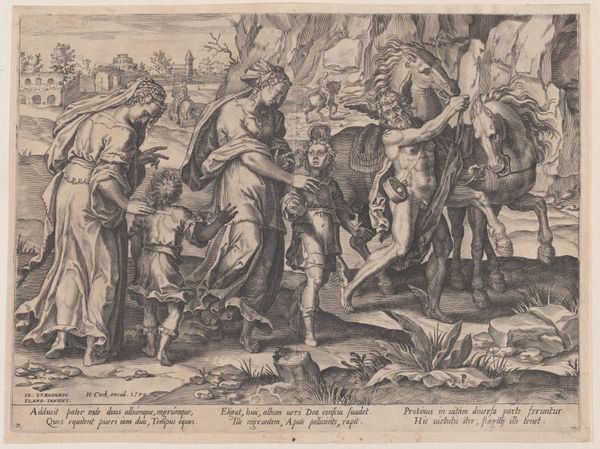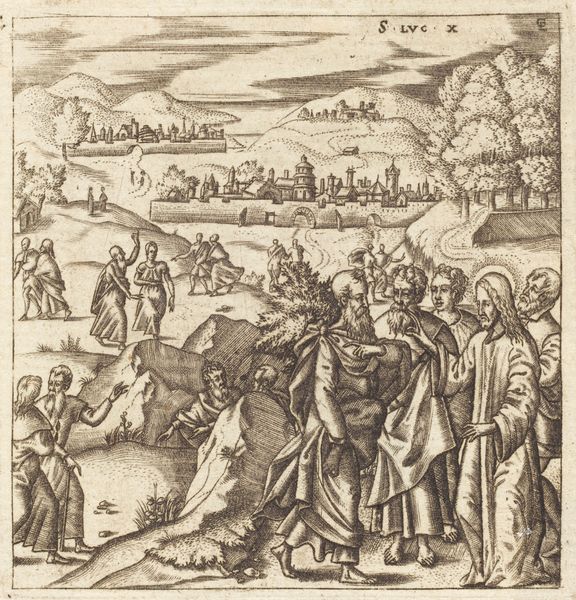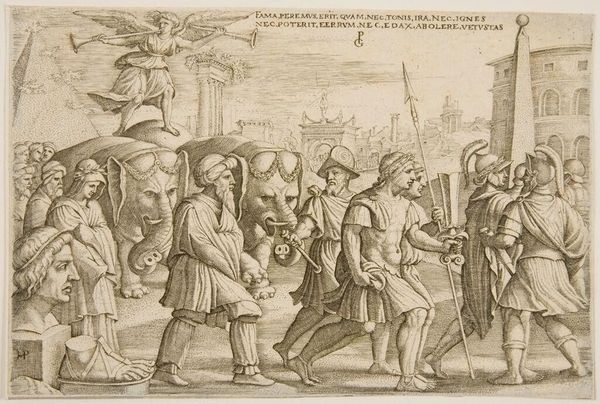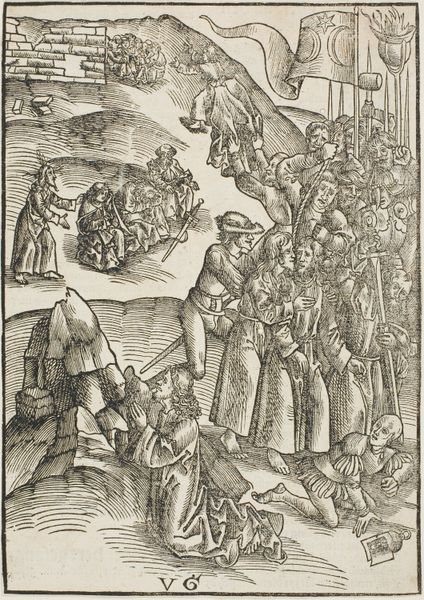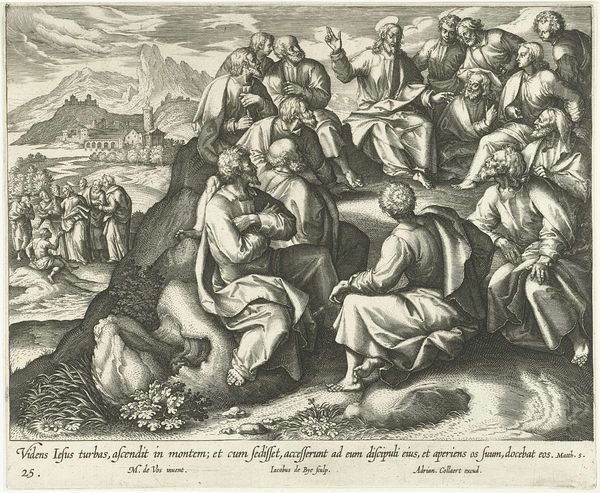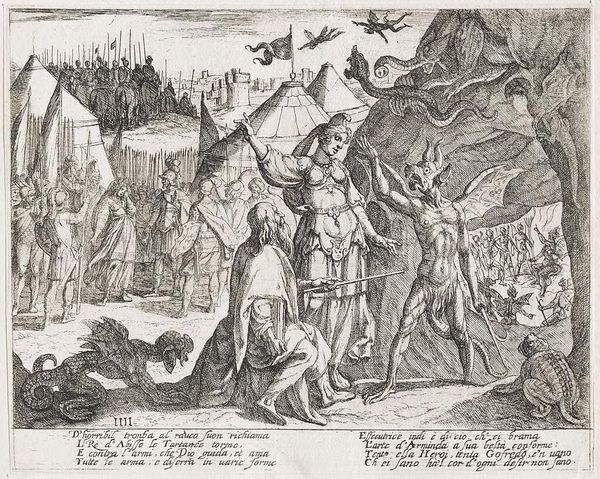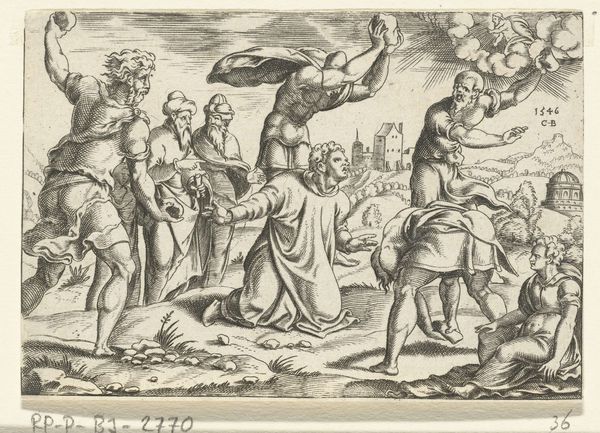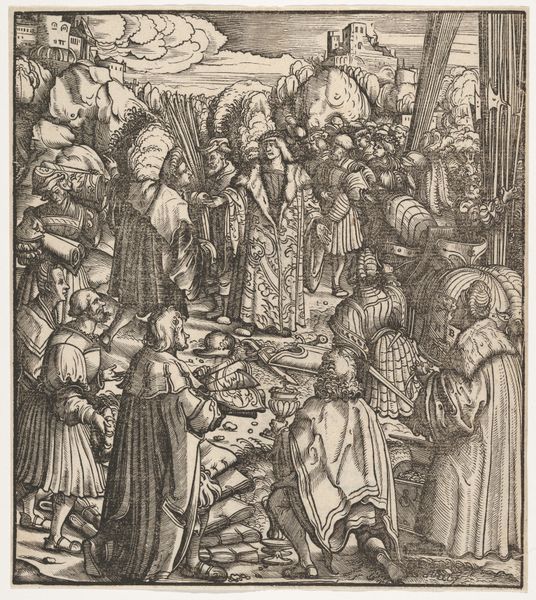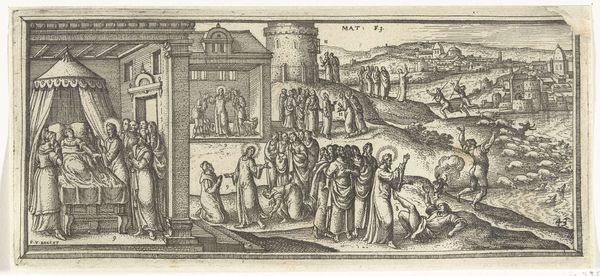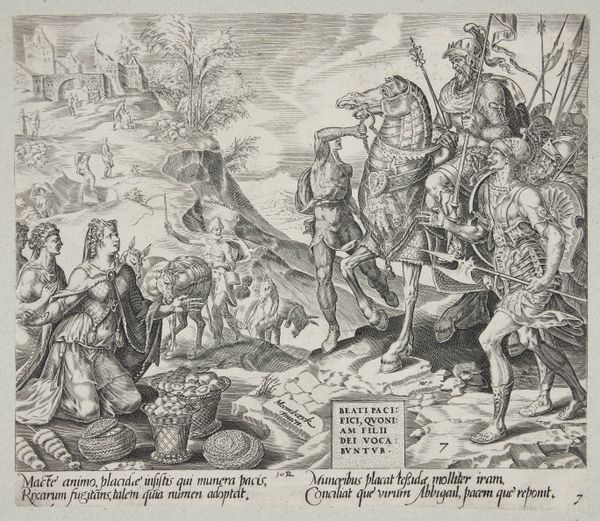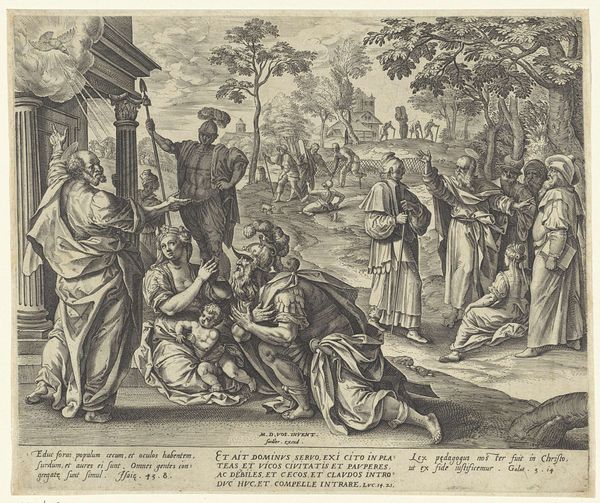
print, engraving
#
allegory
#
pen drawing
# print
#
mannerism
#
figuration
#
line
#
history-painting
#
northern-renaissance
#
engraving
Dimensions: height 176 mm, width 225 mm
Copyright: Rijks Museum: Open Domain
Curator: Take a moment to look at Hendrick Goltzius’ engraving from 1597, “Proces volgt Blinde Begeerte”, which translates to "Process Follows Blind Desire." It's currently held in the Rijksmuseum collection. Editor: My immediate reaction is that it's crowded and unsettling. There’s a bizarre cast of characters leading us into what looks like…hell? The lines are so precise yet the subject matter is disturbing. Curator: Indeed. Goltzius was a master of line and allegory. This engraving employs mannerist conventions with its elongated figures, dynamic composition, and moralizing message. Note how the figures are emerging from a dark cave on the left. It visualizes the ruinous path one takes when pursuing blind desire, symbolized by the figures that lead the procession. Editor: So we have figures representing vices and weaknesses, leading presumably unsuspecting people to their doom. I am intrigued by the figure with the dog’s head in this bizarre parade and the skeleton-esque figure besides him. And leading them along—Cupid wearing what looks like a bucket on his head? It all seems incredibly heavy-handed. Curator: It is dense with symbolism. The dog-headed figure probably alludes to sensual pursuits and the skeleton, clearly mortality—each represents the different faces of earthly temptations. Even Cupid, normally the charming god of love, is weighed down and distorted. The "bucket" is probably a fool’s cap which further signals the irrationality of desire. Editor: The whole thing reads as a cautionary tale, reflecting perhaps, a societal anxiety present in the late 16th century about moral corruption and the dangers of unchecked desires. And it speaks to the Northern Renaissance preoccupation with mortality and moral lessons through art. Curator: Exactly. Goltzius is very deliberately presenting a world where reason and virtue are abandoned in favor of base instincts. The cave symbolizes ignorance. Note how Process, embodying proper legal action and reason, is the last character pictured as the group exits the darkness of the cave. He is barely keeping up as blind desire sprints along the road. Editor: It's a stark warning, visually arresting and quite disturbing even now, centuries later. Though I’m not sure about Goltzius’ subtle and sophisticated treatment. Still, it shows that images, just as much as written texts, could participate in cultural critiques. Curator: I think what captivates me most is how Goltzius distills universal moral lessons through highly specific, culturally-coded symbols. These visual shorthands connect past viewers to contemporary audiences in an unspoken understanding. The symbols are there to guide each viewer as it always has been.
Comments
No comments
Be the first to comment and join the conversation on the ultimate creative platform.

